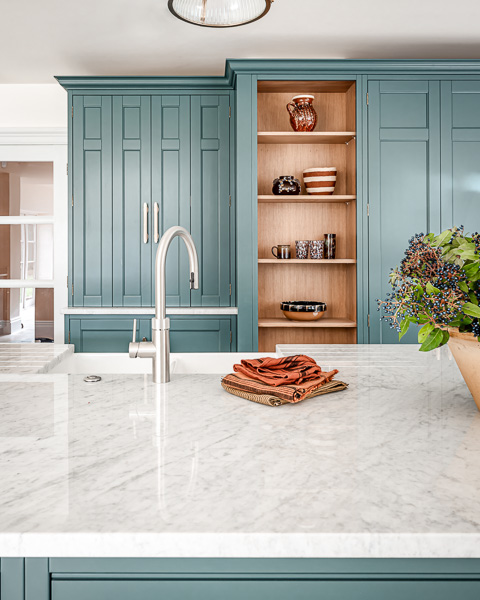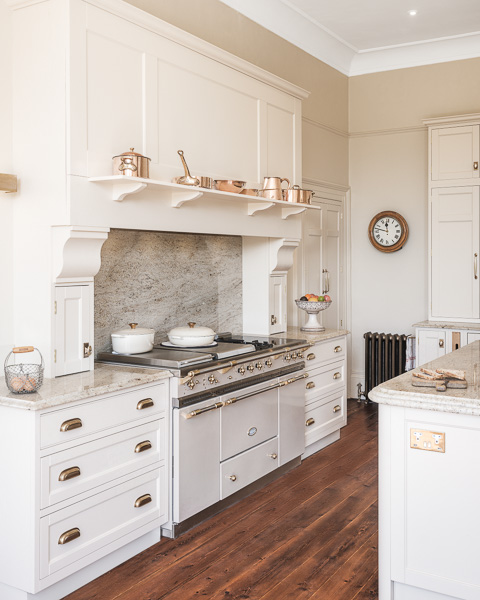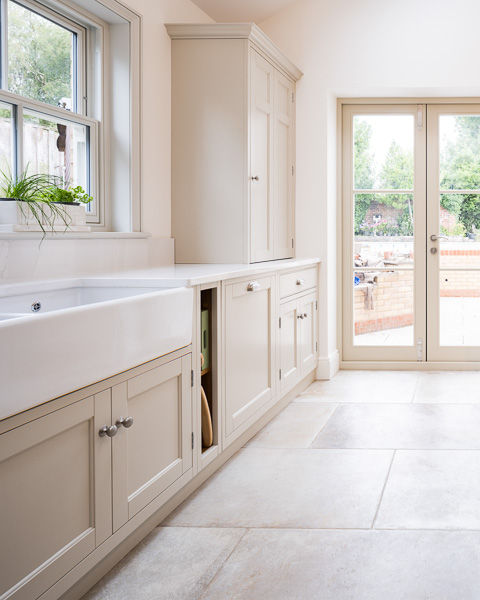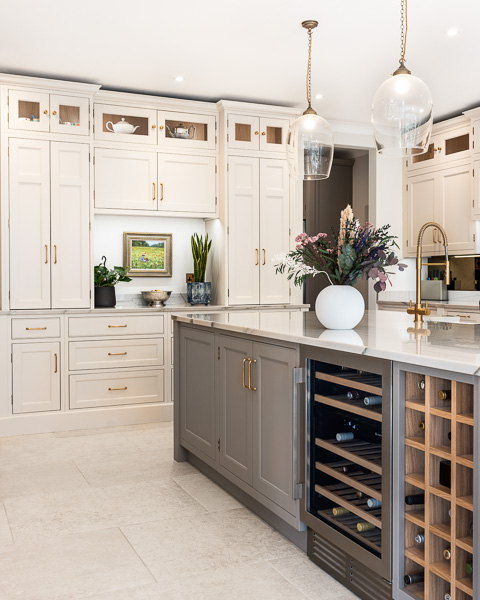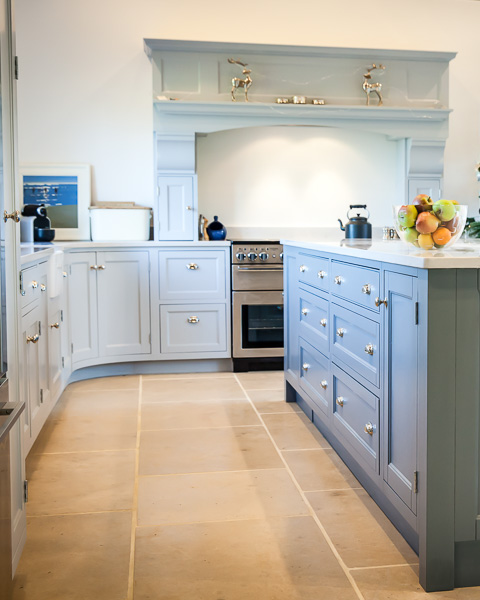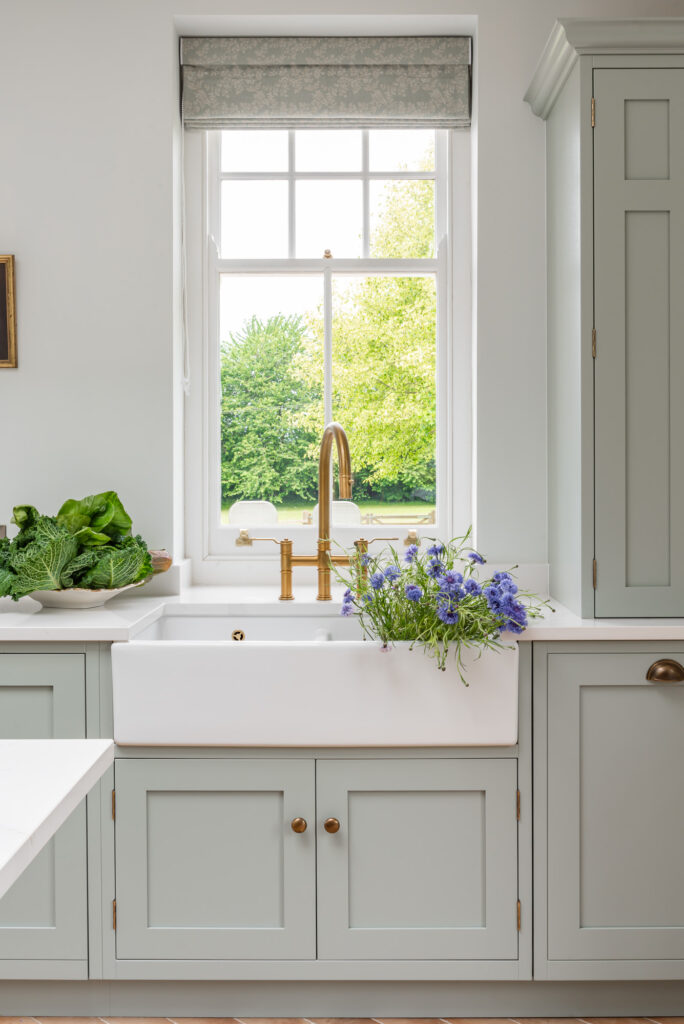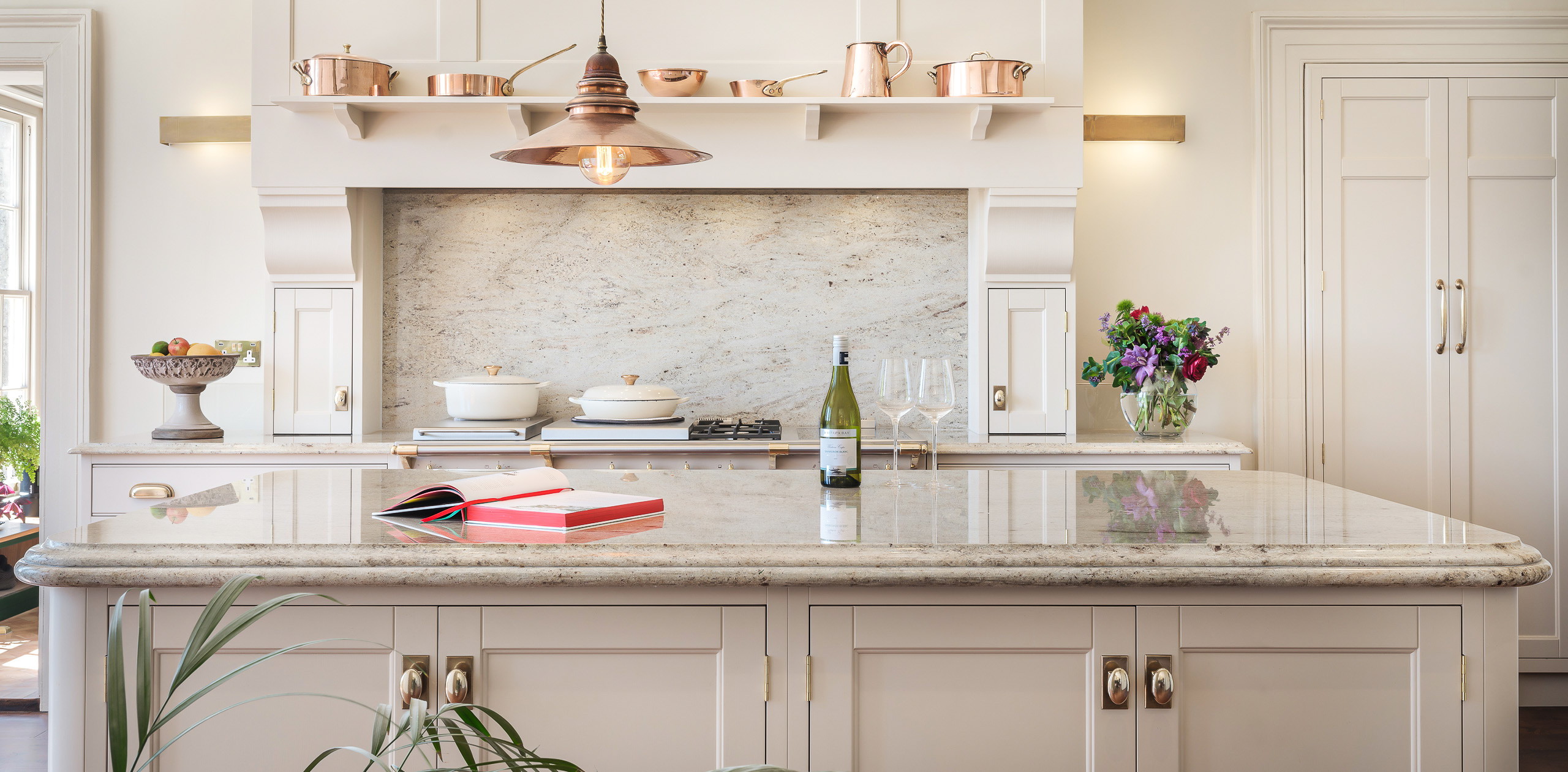
The Period English Kitchen
Timeless Elegance
Whether you are trying to recreate a Georgian, Victorian or Edwardian style kitchen choose our ‘Period English’ style units with its classic thumb moulds and an authentic bead finish. A very classic and timeless appearance is created by the Period English kitchen, which blends traditional characteristics in a straightforward design. The in-frame styled look creates a tranquil space to unwind and entertain guests. It is displayed here in a combination of dark and light hand-painted tones.
BEAD & THUMB MOULDING
Classic English Design
Bringing together timeless design and the finest craftsmanship, the Period English collection is defined by a classic thumb mould around the panelled doors and drawer fronts and a bead running the length of the top and bottom edges of the top drawers. Traditional techniques like the Mortise and Tenon joint, solid steel butt hinges and dovetail drawers add strength to our handmade units and make them traditionally authentic
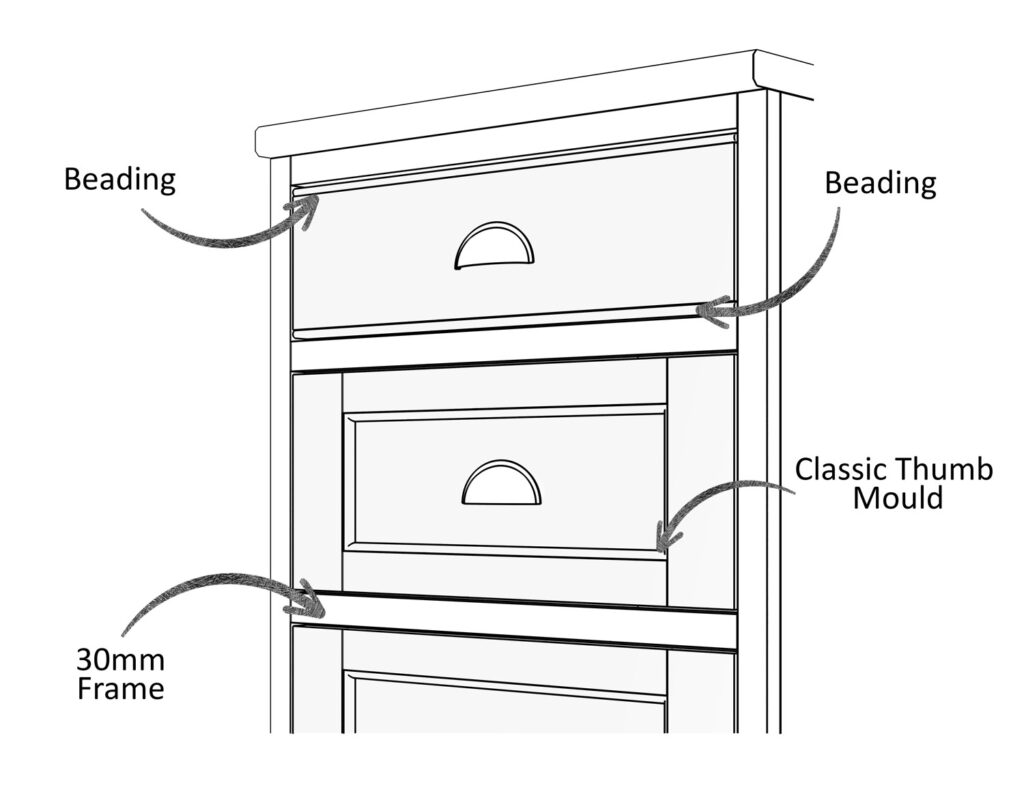
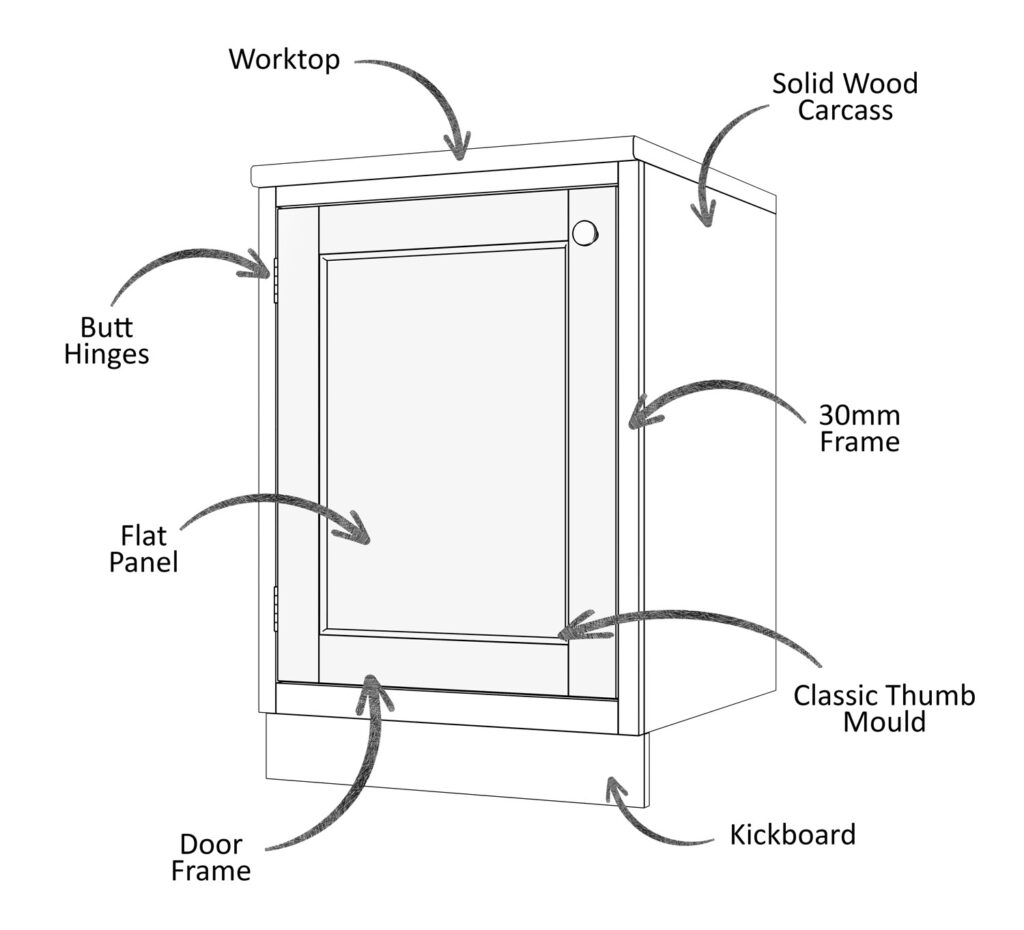
TRADITIONALLY HUNG
In-Frame
All our doors are hung in-frame, meaning they are positioned inside a frame rather than on the outside, which can lead to sagging over time. This style imparts a distinctive and classic appearance to the kitchen. In-frame cabinets are renowned for their robustness and longevity, making them the preferred choice for those seeking a traditional and elegant kitchen design. They are often associated with high-quality craftsmanship and are our top choice for bespoke kitchen designs.
GEORGIAN STYLE
The Georgian Kitchen

Georgian-era kitchens were very much out of sight and out of mind. A quintessential Georgian kitchen would have been a simple basement room, used by servants. It would have painted woodwork with cabinets and walls decorated in a single colour with a matt finish often greys and blues. While early Georgian schemes used strong, dark colours, later ones favour lighter colours, including sky-blue, beige and stone.
The below-stairs kitchen would be made up of several rooms; the main kitchen (cooking area), scullery (for washing and cleaning), larders and pantries. If you haven’t space, you can dedicate areas of your kitchen for each task and design them appropriately.
Marble was a material favoured by the Georgians so it is a natural choice for the worktops of a Georgian-inspired kitchen. A butler or Belfast sink was an important feature of the Georgian kitchen, and its solid, unfussy shape still appeals today. For the door furniture bronze drop handles, cup handles and knobs would suit this period.
VICTORIAN STYLE
The Victorian Kitchen
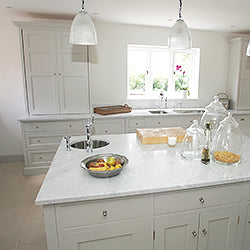
Many people choose a Victorian kitchen which is a wonderful way to add feeling to your kitchen. But nailing down one look for your kitchen from the Victorian era isn’t easy.
Kitchens of this era were bright and functional. A feeling of a warmth and welcoming atmosphere is what this period in time was all about. For a plain English style opt for very pale paint colours, creams and whites are traditional but other pale colours like soft greys and lime distemper work equally as well. Contrasting solid wood with bright and clean worktops is a hallmark of the Victorian age and combining both the painted and wood cabinets can be stunning.
We like the idea of copper in the kitchen and it’s one of our hot trends. Copper was a staple material used in Victorian kitchens from the pots and pans, the kettle and even pipes and taps. Don’t go overboard, a few carefully chosen pieces will go a long way. So remember; go with the marble worktops, blue colour schemes and bronze accessories from the Georgian era and in with the wooden work surfaces, cream cabinets and copper finishes.
EDWARDIAN STYLE
The Edwardian Kitchen

By the early 1900s, gas cooking and electricity were invented and was also the first time people were introduced to refrigerators, boilers and ovens. Clean water had become prevalent and now sinks became a focal point of the kitchen and large enough to carry out all manner of water-related activities. Factories started mass-producing standard white enamelled iron, granite, and slate sinks.
The issue of sanitation was also one of importance, and it was advised that walls be made of white glazed tiles and floor coverings of oilcloth and linoleum. White became the colour choice for kitchens, as it was easy to clean and served as mimicry of the cleanliness of surgical areas.
With the industrial revolution and the introduction of production lines into factories, efficiency became sought after in working environments, including the kitchen. Cabinets became a necessity to hold the growing number of pre-packaged foods available from the newly opened grocery stores and this was the start of the ‘built-in’ kitchen we can see today.
Copper was classed as outdated and enamelled iron was in as it was easier to clean. Glass-fronted cupboards were chosen instead of open shelving and although the kitchens were mainly white they were often mixed with bolder contrasting colours for the floors and furniture. Take a look at one of our client’s Edwardian-inspired kitchens.
Modern machines are the anachronism in a period kitchen. We have a large selection of units designed to hide and house your appliances and whether you opt for freestanding or fitted units there are hundreds of options to create a traditional kitchen. We have a modular system, which allows you to buy directly from our online store using our design guide or allow us to design your bespoke kitchen for you. Either way, you can achieve a unique period kitchen style, whether it be Georgian, Victorian or Edwardian. Most period kitchens have centre tables that double up for prepping and dining. Nowadays we can opt for kitchen islands, where we store goods, prep, eat and house modern appliances.
 Bespoke made in 10-12 weeks
Bespoke made in 10-12 weeks  National Installation
National Installation  Worldwide Shipping
Worldwide Shipping 